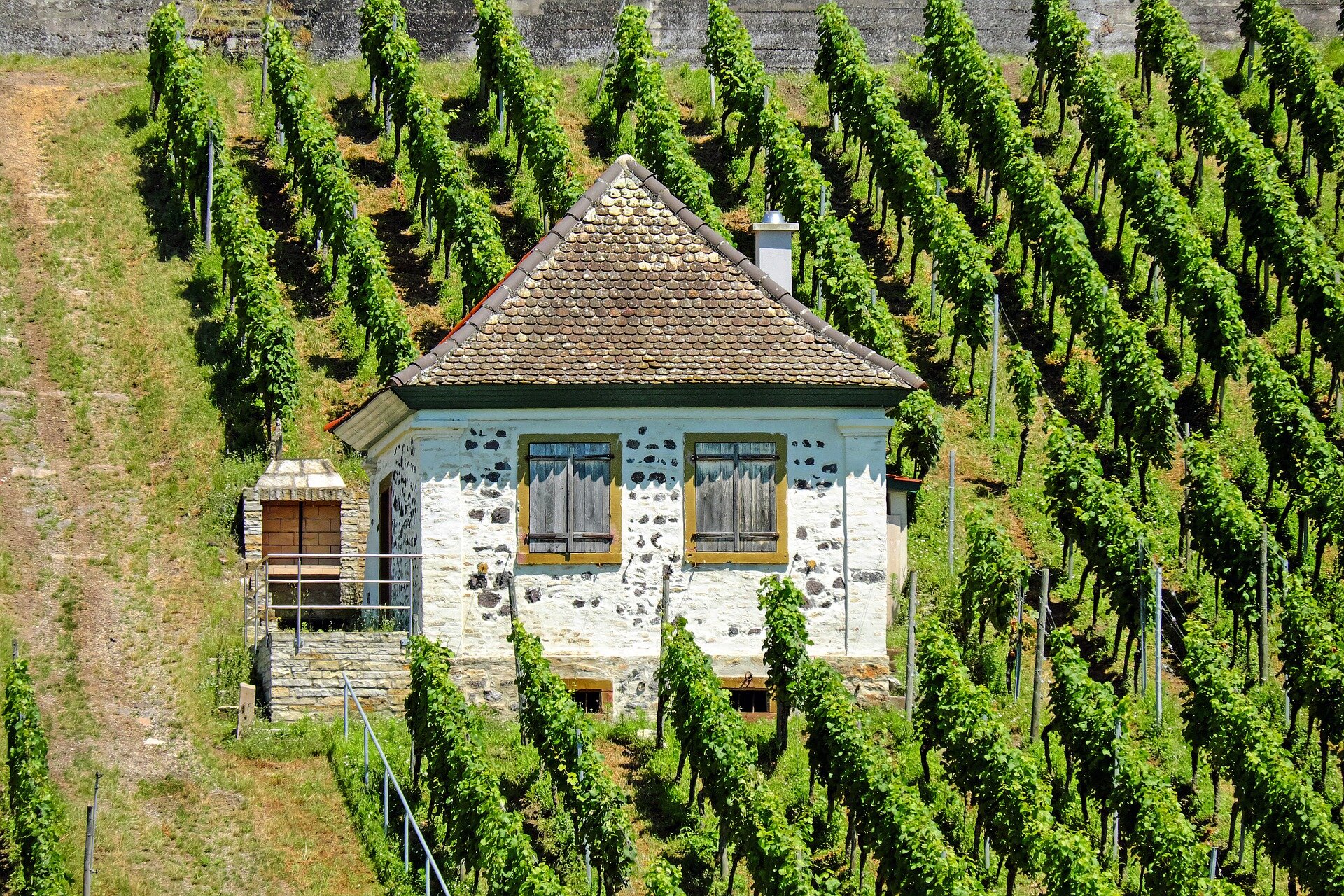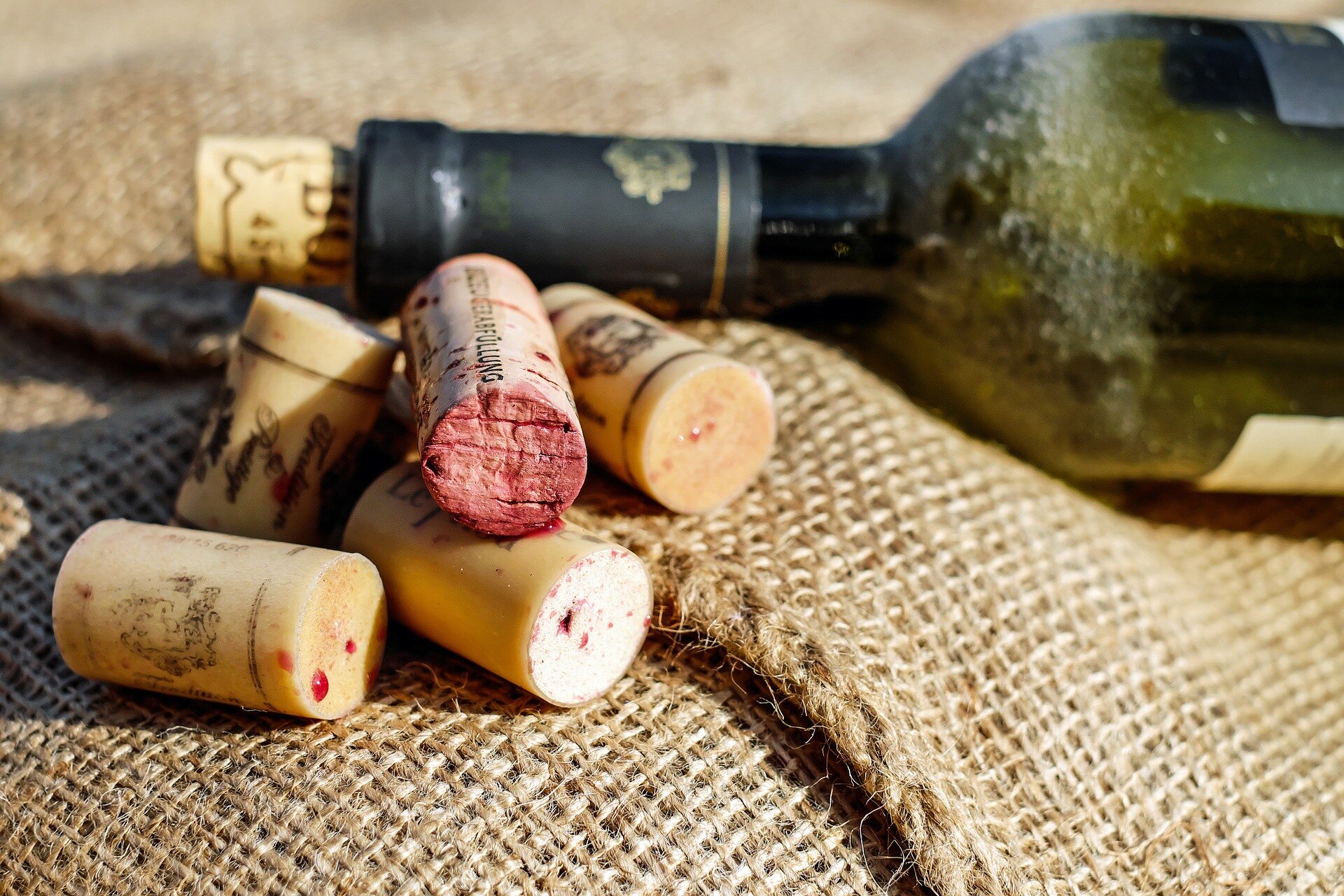
Burgundy & much more: wine varieties in the Kaiserstuhl Nature Garden
Our Burgundy
Grauer Burgunder/Ruländer: Refined and full-bodied.
Variety and cultivation:Pinot Gris is the most important white grape variety in the Kaiserstuhl region with a cultivated area of over 900 ha. This is a share of over 21 percent of the total planted vineyard area. In Tuniberg, Pinot Gris accounts for about 10 percent of the planted vineyard area.
Colour and taste:Pinot Gris smells - depending on the method of cultivation - of green nuts, almonds, fresh butter and pear and tastes of pineapple and citrus fruits, dried fruit and sultanas. In addition, vegetative notes of green beans or peppers occasionally appear. Barrel-aged wines may show fine toasted notes.
Recommended food:Pinot gris can be served with any course of a meal. Dry Kabinett wines and Spätlese wines harmonise well with seafood, strong sea fish, pasta and ripe soft cheeses. Full-bodied varieties - also from the barrique - go well with intensely flavoured lamb and light game dishes, such as wild fowl or venison. Fruity-sweet Spätlese or noble sweet Auslese wines go particularly well with fatty blue cheese and desserts with honey, almonds or marzipan.
WeißerBurgunder:Fresh and delicate.
Variety and cultivation:Thanks to their high acidity, Pinot Blancs are usually elegant and racy and excellent menu wines. They are late bloomers: they reach their flavour peak at the earliest one year after harvest. White Burgundy plays a considerable role in the Kaiserstuhl and Tuniberg regions. The area under cultivation in the two wine-growing regions totals over 600 ha.
Colour and taste:Pinot Blanc smells and tastes of (green) nuts and almonds, pear and quince, pineapple and apricot. Often there are notes of citrus fruits, sometimes of freshly cut grass. Pinot Blanc is as refreshing as it is complex and a first-class food companion.
Food recommendation:Dry Pinot Blancs go excellently with vegetable dishes of all kinds, fish, seafood, white meat and pasta with creamy sauces. More substantial versions also go well with refined wild fowl or lamb dishes.
Müller-Thurgau:Light and aromatic.
Variety and cultivation:Today, Müller-Thurgau is considered one of the standard varieties, although it was only created from a cross about 100 years ago. In 1927, Professor Hermann Müller from Thurgau in Switzerland bred the grape variety - hence the name. It is now known that Müller-Thurgau descends from Riesling and Madeleine Royal (other sources call it Gutedel) - not, as long assumed, from Silvaner. The name Rivaner is still a reminder of this theory.
The early-ripening Müller-Thurgau shows its full strength when yields are reduced. Müller-Thurgau is one of the main varieties in both the Kaiserstuhl and Tuniberg regions. With a total of over 1000 ha of vineyards, the percentage share in both areas is almost 20 percent.
Colour and taste:Müller-Thurgau wines combine fruit aromas - for example crisp apple and apricot - with mild fruit acidity. There is often a slight hint of nutmeg. The wines taste best fresh and young. They are ideal summer wines. When vinified dry, the variety is nowadays often referred to as Rivaner.
Food recommendation:Its playfully light character goes well with fresh spring and summer cuisine. With asparagus salad, for example, with fine vegetable quiches or delicate fish dishes. Semi-dry versions are also a real "treat" with fruity desserts such as fruit salad with vanilla cream, apricot tartlets or a tarte tatin with apples.
Pinot Noir:first-class wines.
Variety and cultivation:Pinot Noir is to red wines what Riesling is to white wines: the top of the quality pyramid. Pinot Noir is one of the earliest grape varieties to be selected from the wild vines of Central Europe. Emperor Charles III brought Pinot Noir to Lake Constance in 884. Most Pinot Noir vines on German soil grow in Baden.
This noble variety requires a lot of care. It makes high demands on climate and soil. In Baden, especially in the Kaiserstuhl and Tuniberg regions, it finds the very best growing conditions to produce red wines that are among the best in the world. This is why Pinot Noir grapes account for over 36 per cent of the total area planted with vines in the Kaiserstuhl, and even over 50 per cent in the Tuiberg. Rosé wines and Weissherbst are also part of the potential of Pinot Noir. If the grapes are pressed quickly after harvesting, a "Blanc de Noirs", a white wine made from red grapes, can be produced from the light juice. Pinot Noir can also be made into sparkling wine, as red sparkling wine or Blanc de Noirs sparkling wine. The finest Pinot Noir wines are often aged in barriques.
Colour and taste:Pinot Noir wines taste full-bodied and velvety. Typical Spätburgunder has a pleasant aroma of red fruits, from strawberry to cherry and blackberry to blackcurrant, with nuances of almond. Barrique-aged Pinot Noirs have hints of vanilla and cinnamon. Pinot Noirs with a strong colour, more tannins, less acidity and ageing in small oak barrels are gaining more and more enthusiasts.
Food recommendation:Pinot Noir is very versatile in all its varieties: As a sparkling wine, it pleases as an aperitif. As an appetiser, the Blanc de Noirs variants do honour, with fish, for example, or with fine vegetable salads. And with the main course of beef or game, a Pinot Noir is the perfect partner.
Sauvignon Blanc:Crisp and fruity.
Variety and cultivation:Sauvignon Blanc is an "international" grape variety. In Germany, cultivation is still very low - but with an upward trend, because the fruity-fresh wine has many lovers. Sauvignon Blanc has a long tradition in Durbach, Baden, among other places. After 1830, the Count Wolff Metternich's vineyard, which belonged to Count Zorn von Bulach at the time, planted Sauvignon Blanc vines in the Schloss Grohl vineyard that came from the Sauternes-Château d'yquem. The wine was marketed as "White Bordeaux" until the 1980s with a special permit. The area under cultivation in Tuniberg and Kaiserstuhl is about 21 ha.
Colour and taste:Sauvignon Blanc smells of gooseberries and currants. Its aromas range from freshly cut grass to herbs, from green apples to fresh pineapple.
Food recommendation:With its refreshing character, Sauvignon Blanc is a wonderful drop on the terrace. It goes excellently with fish pâtés, seafood such as scallops or pasta with creamy sauces. It is also fun with fresh goat cheese and creamy soft cheeses.
Muskateller:Light and aromatic.
Variety and cultivation: Muskateller is one of the oldest cultivated grape varieties. Over the millennia, many different varieties have developed. Today, only the Gelber Muskateller is cultivated in Baden - a typical Baden speciality. The area under cultivation in the Kaiserstuhl and Tuniberg is less than 50 ha. The Muskateller grape is very demanding on the vineyard and is very sensitive to frost.
Colour and taste:The Muskateller produces light, racy, aromatic wines with a distinctive but fine bouquet of nutmeg. Sparkling wine from this fine grape variety is appealing and expressive - an aromatic experience.
Food recommendation:Simple cabinet wines are suitable for various starters, salads and also fruity desserts because of their acid balance and despite their delicate bouquet. Try Muskateller with salami and ham - it goes well! Edelsüße Auslesen are a wonderful aperitif and then again a delight with desserts of all kinds.
Other varieties that are grown in the Kaiserstuhl and Tuniberg but play a minor role are: Auxerrois, Gewürztraminer, Scheurebe, Solaris, Cabernet Mitos, Regent, Riesling, Chardonnay, Acolon, Cabernet Dorsa, Merlot and Cabernet Sauvignon.
Wine Knowledge Kaiserstuhl & Tuniberg
